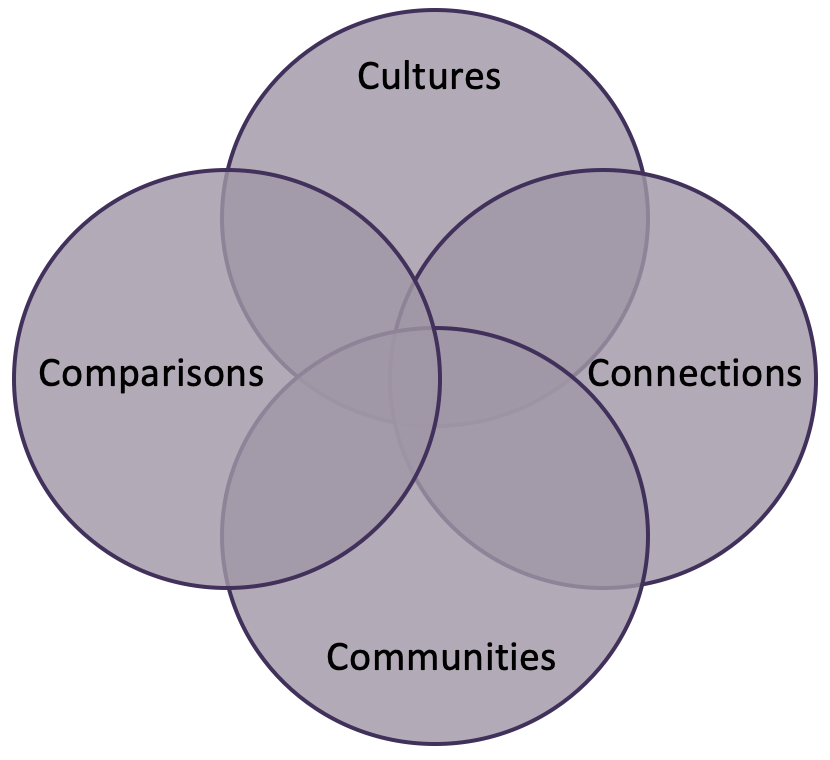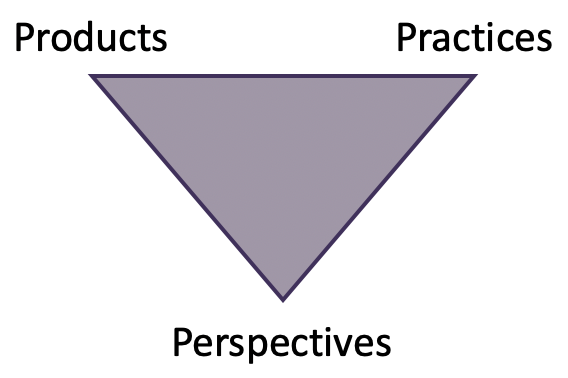Create a Standards-Based Integrated Performance Assessment Unit
Step-by-Step
Step 5: Identify the Cultures, Connections, Comparisons, Communities Standards

Each of these Goal Areas has two Standards. As you design your unit of instruction, think about how these Goal Areas contribute to a richer, deeper learning experience for the students. A well-constructed unit addresses all the Standards. Below are the definitions for these Goal Areas and examples of how these Goal Areas are integrated into the unit.
Cultures: Interact with cultural competence and understanding.
- Relating Cultural Practices to Perspectives: Learners use the language to investigate, explain, and reflect on the relationship between the practices and perspectives of the cultures studied.
- Relating Cultural Products to Perspectives: Learners use the language to investigate, explain, and reflect on the relationship between the products and perspectives of the cultures studied.
Knowledge and understanding of the target culture is integrated throughout the unit. It is important to identify the interconnectedness of cultural products to practices and to perspectives of the cultures studied. This relationship is often represented by a triangle:
Example: Students notice that many cities in France have a "Vieille Ville", the historic part of the city which is a cultural product. The practice associated with the "Vieille Ville" is preserving the original historic city. The perspective could be the value placed on preserving the historic center of a town.
Every unit of instruction has multiple opportunities to create and discuss cultural triangles.
Connections: Connect with other disciplines and acquire information and diverse perspectives in order to use the language to function in academic and career-related situations.
- Making connections: Learners build, reinforce, and expand their knowledge of other disciplines while using the language to develop critical thinking and to solve problems creatively.
- Acquiring information and diverse perspectives: Learners access and evaluate information and diverse perspectives that are available through the language and its culture.
Example: Students use their knowledge of major events in World History to place cities on a timeline. They research the city's past to determine if it was of economic, political, social importance. They could then determine if the city is of the same importance today and why it has or has not maintained the same importance.
Comparisons: Develop insight into the nature of language and culture in order to interact with cultural competence.
- Language comparisons: Learners use the language to investigate, explain, and reflect on the nature of language through comparisons of the language studied and their own.
- Cultural comparisons: Learners use the language to investigate, explain, and reflect on the concept of culture through comparisons of the cultures studied and their own.
Example: Students compare how streets, buildings, areas of a city are named. Culturally, students compare how cities are designed in the target culture and the U.S.
Communities: Communicate and interact with cultural competence in order to participate in multilingual communities at home and around the world.
- School and global communities: Learners use the language both within and beyond the classroom to interact and collaborate in their community and the globalized world.
- Lifelong learning: Learners set goals and reflect on their progress in using languages for enjoyment, enrichment, and advancement.
Example: Students connect with people in the target culture to compare attitudes towards life in the city where they live. Students create can-do statements describing what they want to know and do related to the unit on city life.

